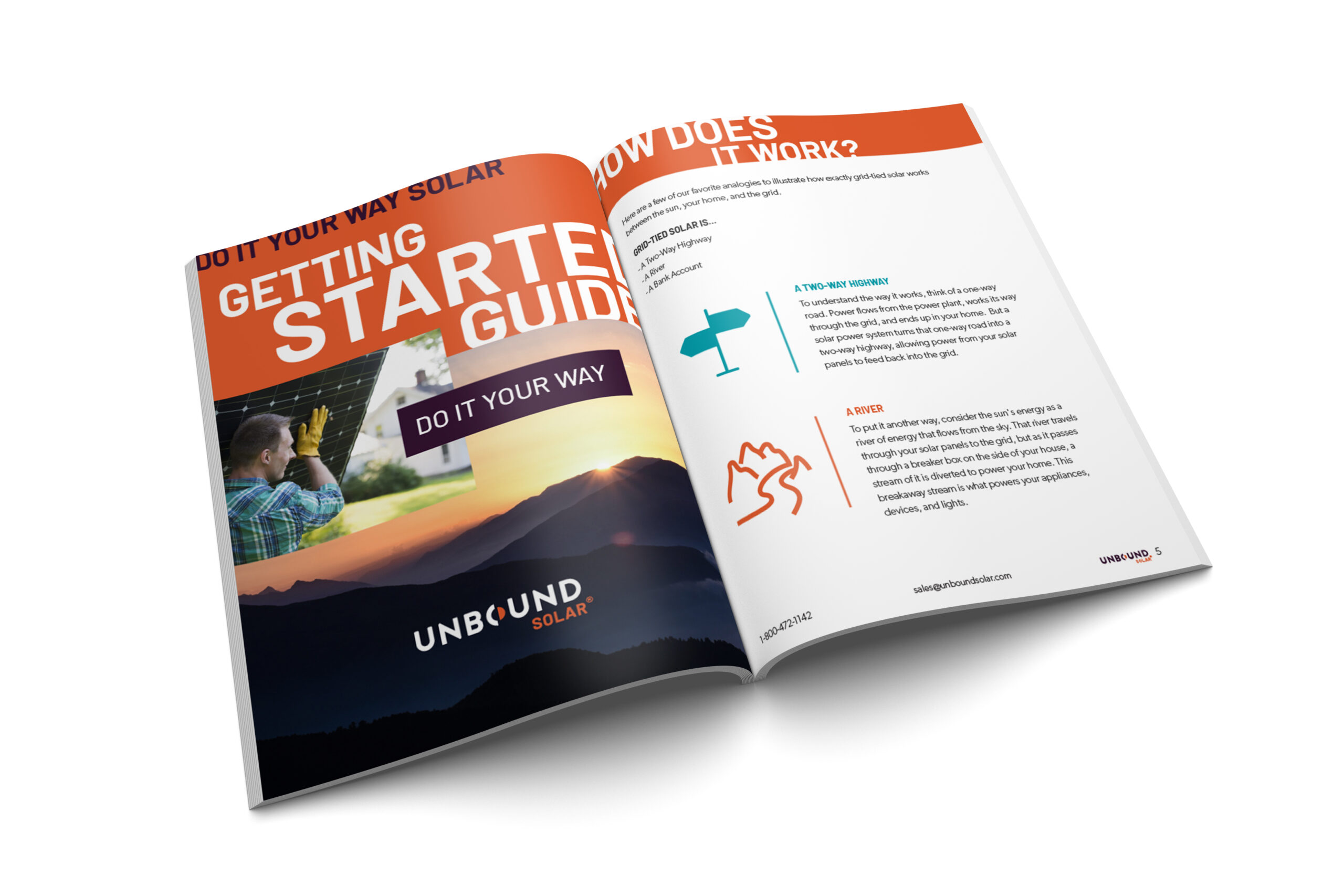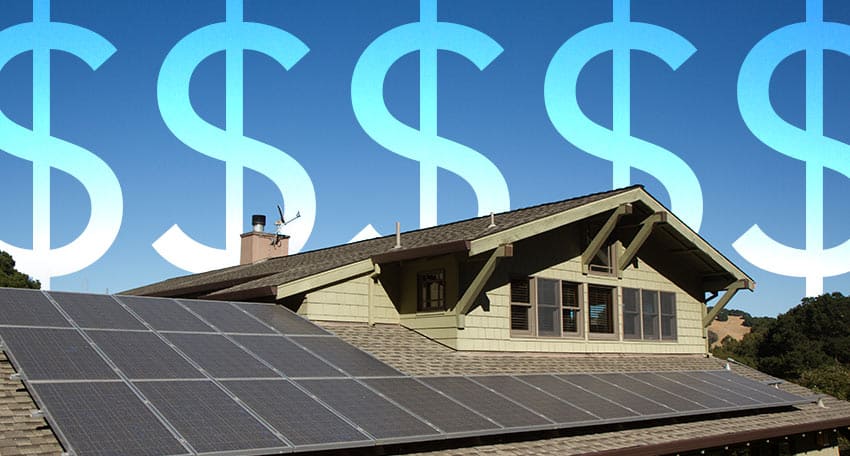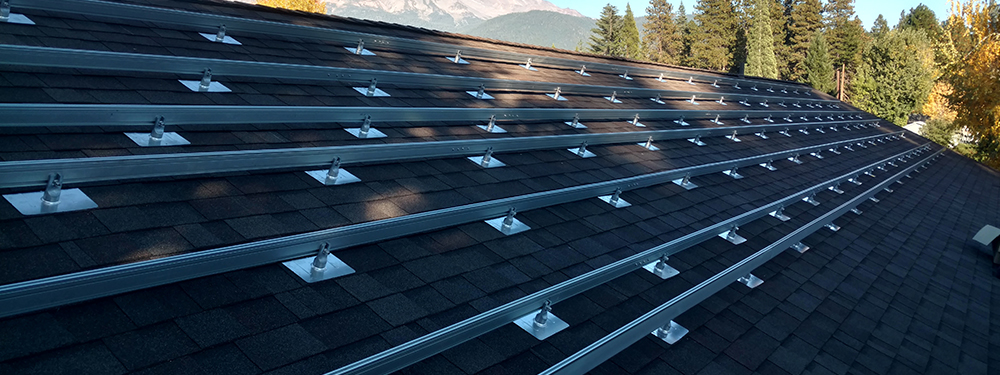As a solar equipment supplier that sells direct to the public, we get 200+ calls a day from people at every experience level, from seasoned solar installers to homeowners exploring the possibility of going solar for the very first time.
Naturally, there are some questions we receive on a daily basis. So for the sake of convenience, we decided to gather the answers to the most common questions we hear in one place.
For each question, we’ll give a (very brief) summary, then link to a resource providing a more detailed explanation if you want to research a particular topic in depth.
Here are some of the most frequently asked questions about solar energy we receive. We’ve written the answers with newcomers in mind, so you don’t need any prior solar background to follow along.
Basic Questions About Solar
- What is the difference between grid-tied and off-grid solar?
- What are the components that make up a solar energy system?
- How long will my system last?
- Can I install solar myself? How much can I expect a solar installer to charge me?
- How do I get a permit for my system?
- What is net metering?
Cost, Financing & Return on Investment
- How much does it cost to go solar?
- What tax credits and incentives are available?
- Is solar a smart investment?
- What financing options are available?
- Which is better: a solar loan, lease, or PPA (power purchasing agreement)?
System Design & Product Research
- What size system do I need?
- What are the best solar products on the market?
- What’s the difference between string inverters, micro-inverters, and power optimizers?
- What are the different types of solar batteries?
- Does solar increase the value of my home?
Basic Questions About Solar Energy
What is the difference between grid-tied and off-grid solar?
Grid-tie systems connect to the public utility grid. The grid acts as storage for the energy produced by your panels, which means you don’t need to buy batteries for storage. This saves a ton of money, which is why we always recommend connecting to the grid if you have a choice.
If you don’t have access to power lines at your property, you’ll need an off-grid system with batteries so you can store energy and use it later.
There’s a third system type: grid-tied with energy storage. These systems connect to the grid, but also include batteries for backup power in case of outages.
Learn more: Grid-tied vs. off-grid solar
What are the components that make up a solar energy system?
The main components for grid-tie systems are:
- Solar panels, to capture energy from the sun
- An inverter, to convert that energy to a format that can power our appliances
- Racking, the foundation on which you mount your system
Battery-based systems also require:
- Batteries, to store the energy you generate
- Charge controller, to control the rate at which batteries charge from solar
Aside from these main components, systems also come bundled with small parts like meters, disconnects, and wires. Browse our system packages for a complete parts list.
How long will my system last?
Solar panels are warrantied for 25 years, so that should be your benchmark for system lifespan. However, you should expect to replace a few other parts along the way:
- Grid-tie string inverters: 10-15 year warranty
- Off-grid inverters: 5-10 year warranty
- Batteries: 1-10 year warranty (varies widely depending on technology and model/manufacturer)
When looking at lifetime cost of ownership, be sure to account for scheduled part replacements along the way.
Can I install solar myself?
Many of our customers choose to install their own system to save money on their project. Some install the racking rails and panels, then bring in an electrician for the final hookup. Others simply source the equipment from us and hire a local contractor to avoid paying markup to a national solar installer.
If you are interested in installing your own system, take a look at the DIY solar timeline to get an overview of the process, or join our free DIY solar workshop for in-depth training and guidance on your project.
If you would like to hire someone to install for you, learn how to hire a solar installer you can trust.
How do I get a permit for my system?
Contact your local AHJ (authority having jurisdiction), the office that oversees new construction in your area, for instructions on how to permit your system. This is typically your local city or county planning office.
You will also need to contact your utility provider to sign an interconnection agreement that allows you to connect your system to the grid (if applicable).
Download our free Solar Permitting Guide for detailed instructions on how to permit your solar system.
What is net metering?
Your utility’s net metering policy outlines the terms you agree to when you connect to the grid. It dictates the rates you are charged or credited for power bought from or sent into the grid. It also outlines terms like variable time-of-use rates.
Understanding your net metering policy is key to figuring out what kind of return you can get from your investment into solar. Read more about how it works in our net metering guide.
Cost, Financing & Return on Investment Questions
How much does it cost to go solar?
Here are our best “ballpark figures” based on your approach to installation. The average system cost is based on the national average energy usage for American homes (914 kwh/mo.), based on pricing as of January 2020.
- Self-installed: $1.10-$1.60 per watt / ~$9,500 average system cost
- Hire local installer: $1.85-$2.60 per watt / ~$15,352 average system cost
- National installer: $2.50-$3 per watt / ~$18,975 average system cost
These are broad estimates. Prices will vary greatly based on your specific energy needs and usage patterns. Use our solar cost calculator to get a tailored estimate based on your location and usage data.
What tax credits and incentives are available?
The federal government offers a large tax credit for installing solar, which can be used to offset taxes you owe when you file. The credit is currently 26% of your total project costs, including installation, but the value drops after 2020.
Read our introductory guide to the federal solar tax credit, or watch the video above for a brief overview.
You may also be eligible for state and local incentives which provide additional savings on top of the value of the federal tax credit. Be sure to research programs in your area so you don’t miss out on any credits or rebates.
Is solar a smart investment?
Grid-tie solar systems pay for themselves by reducing your monthly electric bill. Grid-tie systems have a 5-10 year payback period depending on factors like local climate, cost of electricity, and approach to installation. Considering panels have a 25-year warranty, there’s plenty of time left over to profit off your investment into your panels.
Off-grid systems cost more because they require batteries, but they may still be a good investment compared to other methods of powering the property (like running a power line or using a gas generator).
Read more: Are solar panels worth it? Let’s do the math.
What financing options are available?
If you cannot buy your system outright, there are a few options to go solar with lower up-front cost:
Personal loan: A lender fronts the money for your system. You own the system and can claim any available incentives. You pay a monthly loan payment with interest to your lender.
Solar lease: A solar installer builds a system on your home. They own the system, so they claim any available incentives. You pay a monthly payment to the installer for the right to use all the power that the system generates.
Solar PPA (power purchasing agreement): Similar to a solar lease, except you pay for the power you use each month (at a rate slightly lower than utility power). The installer still owns the system and claims the incentives.
Learn more on our solar financing page.
Which is better: a solar loan, lease, or PPA (power purchasing agreement)?
Solar loans are preferable to leases and PPAs. Under lease and PPA agreements, the installer owns the system, and you are simply renting it from them. That allows them to claim the federal tax credit and any other incentives, which can deprive you of several thousand dollars worth of value.
Leases and PPAs are an appealing way to go solar with no up-front cost, but they are worse for the consumer in the long run. It is a much better deal to take out a personal loan, claim the credit and use it to accelerate your payback period.
Learn more about the true cost of loans, leases and PPAs.
Solar System Design & Product Research Questions
What size system do I need?
Your system size depends on your monthly energy use, as well as site factors like shading, sun hours, panel facing, etc. Our solar calculator is a great way to get an estimate based on your personal usage and location in just a few minutes.
If you would like to learn more about the factors that go into the system design process, check out these guides:
What are the best solar products on the market?
Need help picking products? Take a look at our comparison articles:
What’s the difference between string inverters, micro-inverters, and power optimizers?
Inverters convert the power generated by your panels into a format that can be used by your appliances.
A string inverter allows a group (or a string) of panels to plug into a single input on the inverter. For example, a single string inverter may have 3 strings of 8 panels apiece wired into the inverter unit. This is the most cost-effective option, but they don’t perform as well if your panels are blocked by shade, poor weather, or other obstructions.
Micro-inverters are small units attached to every panel. Each micro-inverter controls the output of a single panel. If one panel’s production drops (due to malfunction or shade, for example), the rest of the panels are not affected.
String inverters with power optimizers combine the benefits of both other types. There is a central inverter unit that pairs with power optimizers which are attached to every panel. The inverter controls the power optimizers individually (like micro-inverters), but the centralized inverter keeps overall costs slightly lower.
Learn more about the pros and cons of string inverters, micro-inverters, and power optimizers.
What are the different types of solar batteries?
Lead-acid batteries are the most cost-effective option, but they require routine maintenance (every month or so) and they have a shorter lifespan.
Lithium-ion batteries are much more expensive up-front, but have a much longer lifespan and are maintenance-free.
Learn the pros and cons of each battery type and evaluate the lifetime ownership cost in this breakdown of lead-acid vs. lithium batteries.
Lead-acid batteries are further divided into a handful of different configurations. Read about the differences between flooded, gel and AGM (absorbent glass mat) batteries.
Does solar increase the value of my home?
Yes, studies have shown that solar homes sell for 3-5% more than comparable non-solar homes. One NREL study showed that solar-equipped homes sold for $16,995 more on average.
So if you want to go solar but aren’t sure whether you’ll stay in your house long enough for the system to pay itself off, you can rest assured that you can recoup most or all of your solar investment when you decide to list your home.
Read our analysis of the study: Do Solar Panels Increase Home Value?
More Solar Questions? Continue Your Research
Still have more questions about the prospect of going solar? Grab a free copy of our Getting Started Guide to get a grasp on the fundamentals.




